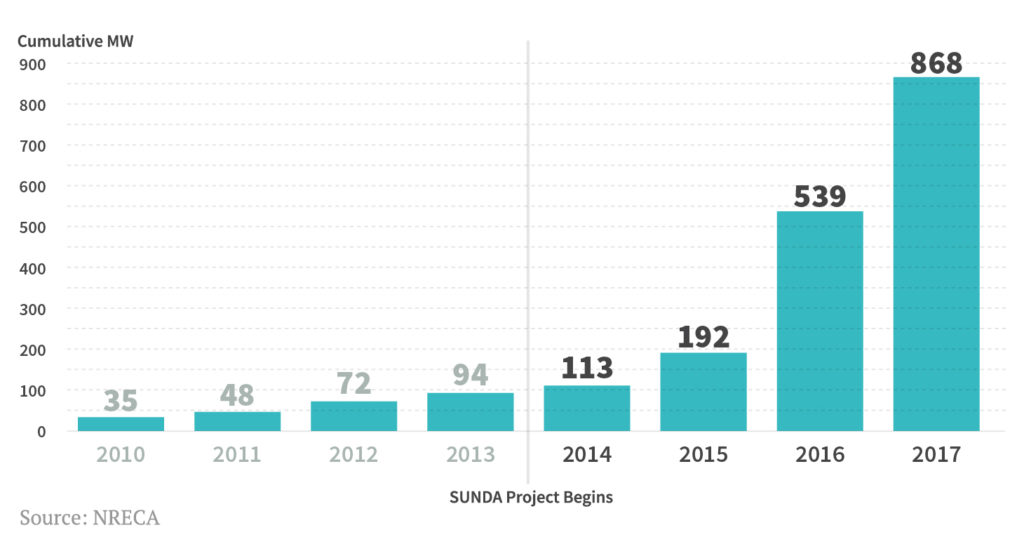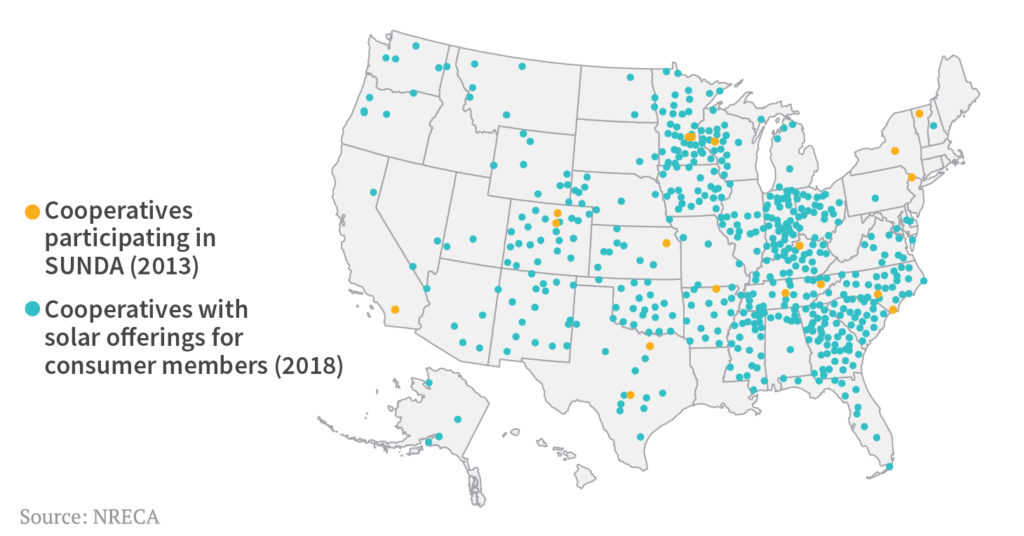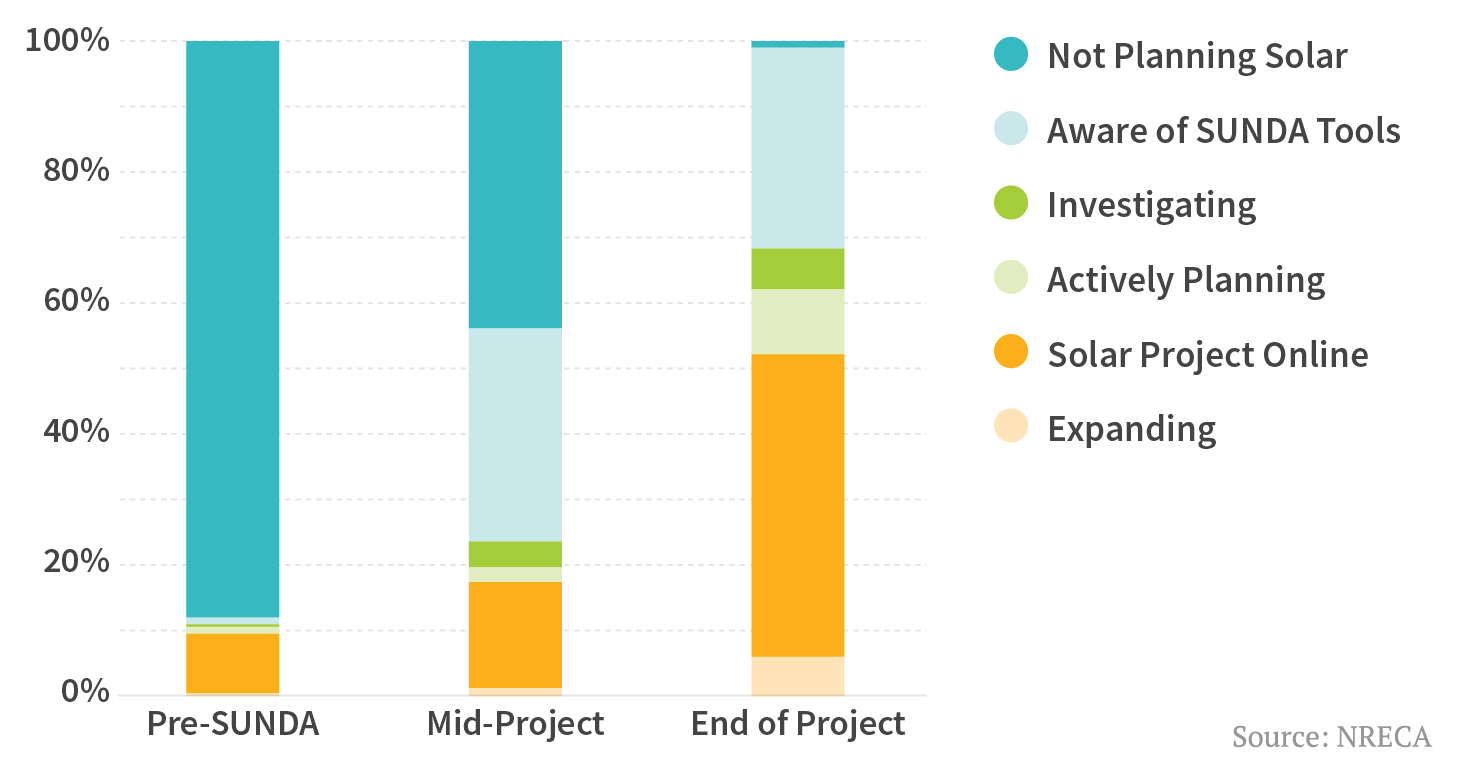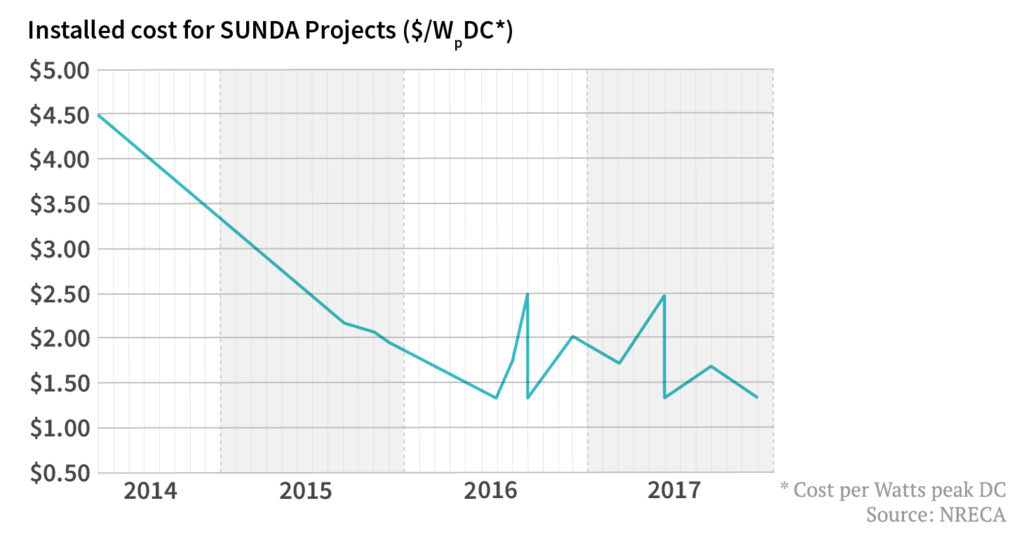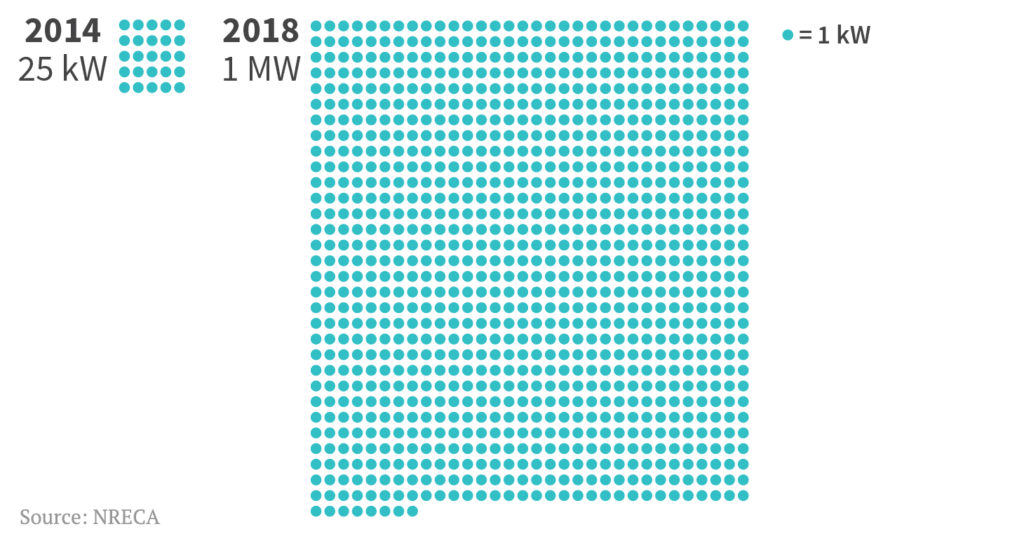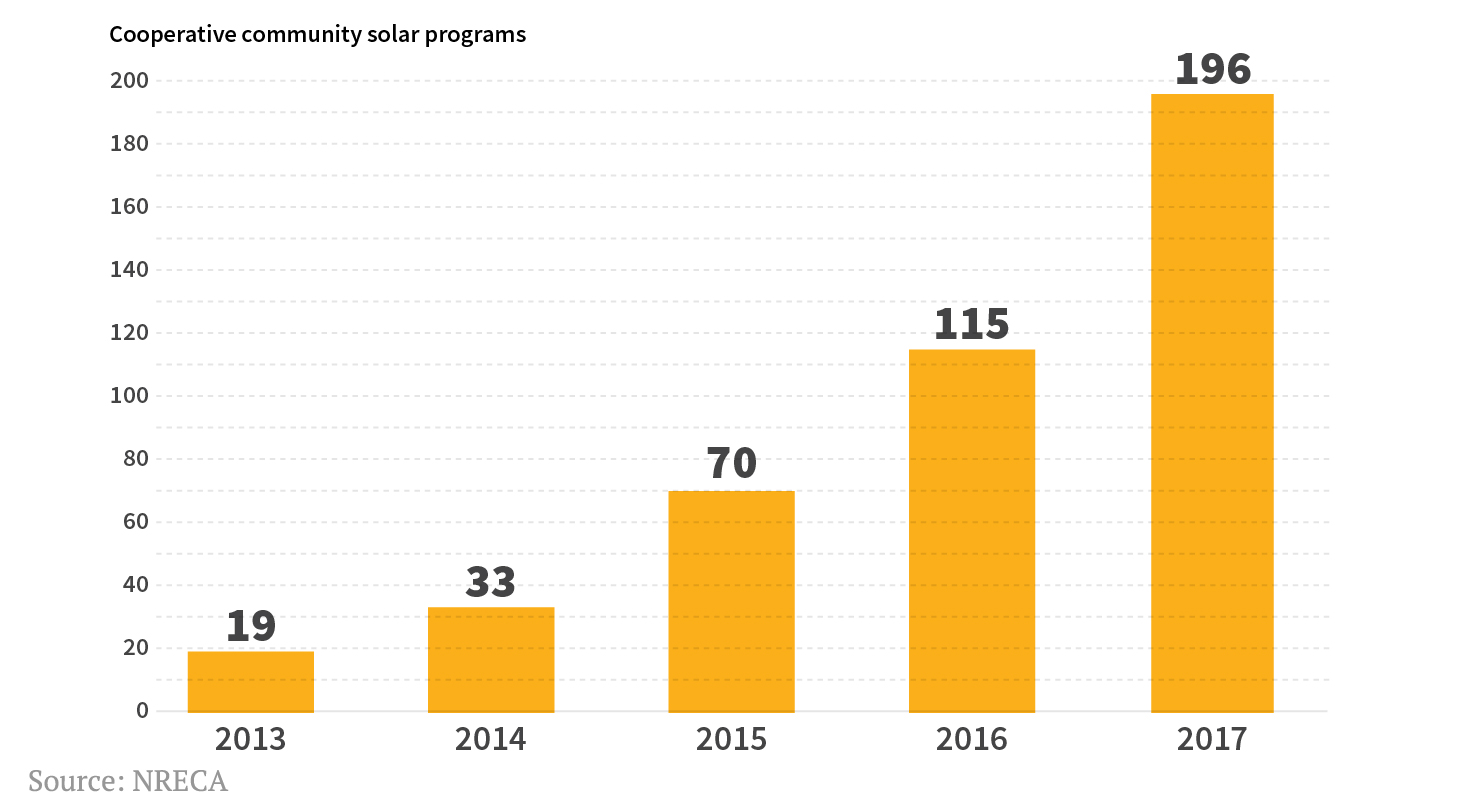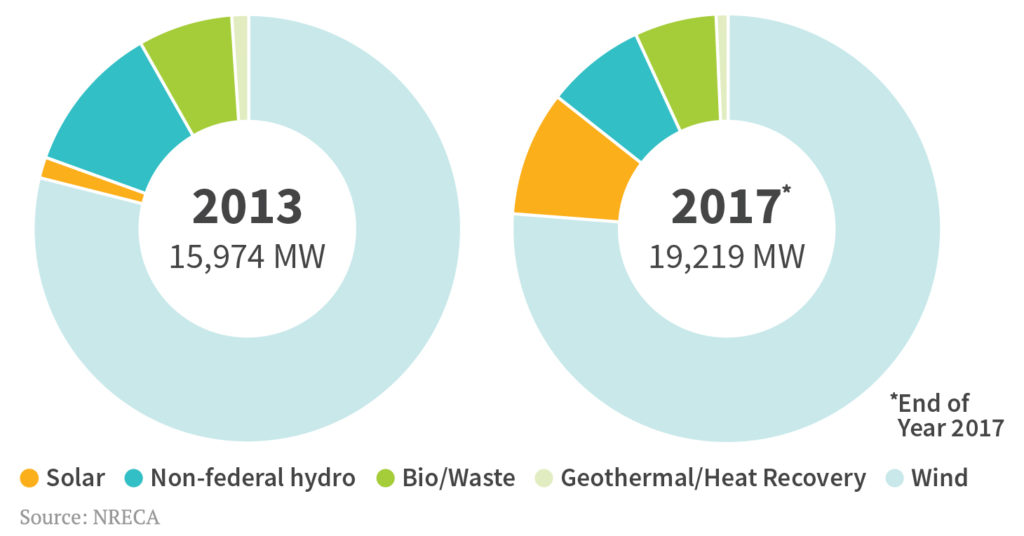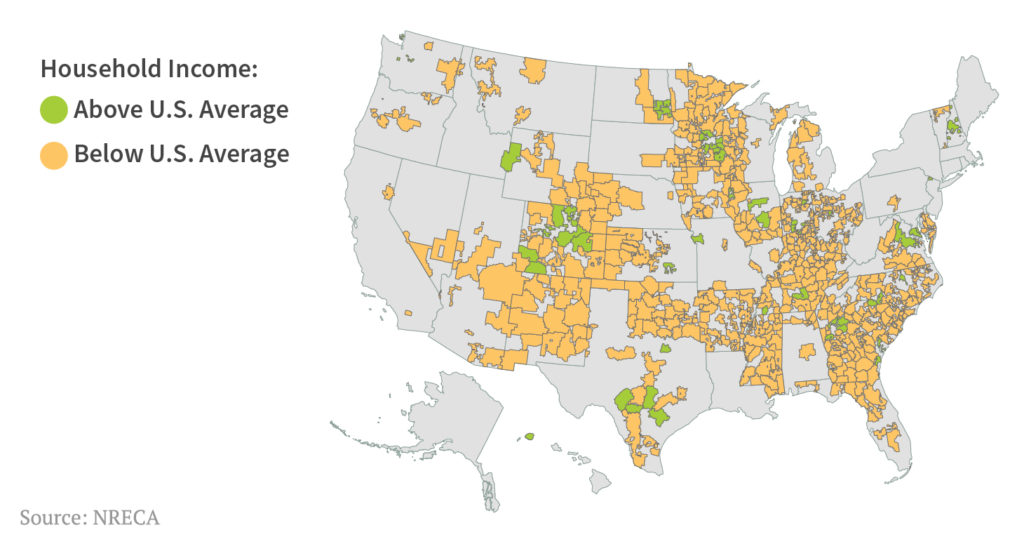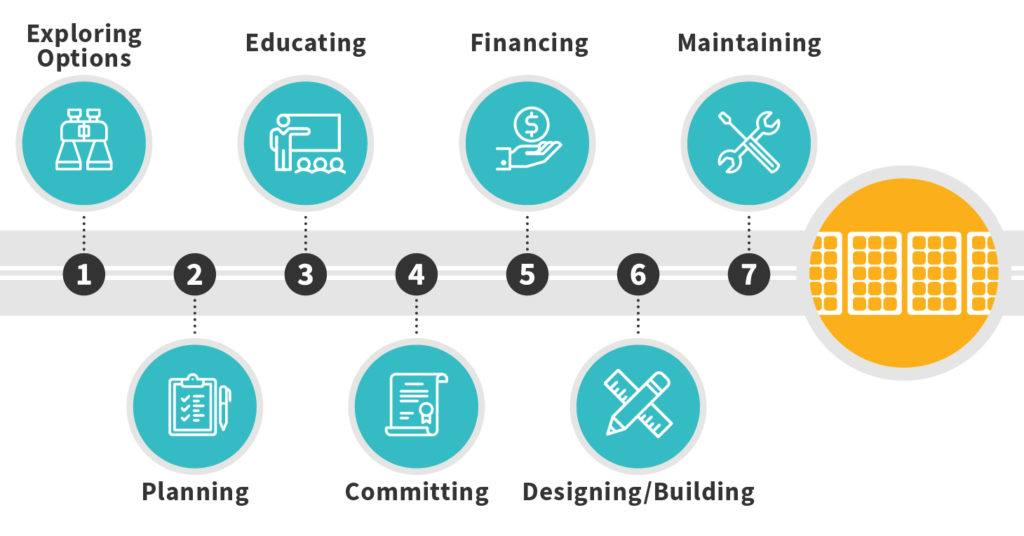The rural American energy landscape is in the midst of a dramatic transformation thanks in part to a four-year research project spearheaded by NRECA and the Department of Energy’s Solar Energy Technologies Office. Electric cooperatives are on track to own or purchase more than 1 gigawatt of solar power by 2019, more than a tenfold increase from what it was in 2013, before the project began.
The initiative, known as SUNDA (Solar Utility Network Deployment Acceleration), officially closes this month. As part of the project, NRECA partnered with 17 co-ops in 10 states to develop 22 solar installations totaling more than 30 megawatts. But the impact of that work went far beyond the footprint of those original arrays.
Lessons learned by the SUNDA partners led to a library of guides and tools designed to help other co-ops evaluate whether solar was right for them. These timely, comprehensive resources helped reduce risks, remove hurdles and lower costs, and now, more than 400 co-ops offer solar to their members. Cooperatives even pioneered the community solar model and now lead the industry with 198 programs across the country.
In addition, large solar deployments by power generation cooperatives on behalf of their distribution co-op members helped demonstrate that increasing the size of a system and involving multiple players can further reduce construction costs and risks.
Here’s a look, in charts and graphics, at the surge in co-op solar the SUNDA project helped spur in rural America:
A Solar Revolution in Rural America
Cooperatives own or purchase more than nine times as much solar energy as they did in 2013 prior to the SUNDA project.
Early Solar Adopters Pave the Way
The experiences of 17 electric cooperatives provide guidance for the co-op network; more than 400 co-ops now have a solar energy option.
Co-op Solar Heats Up
NRECA’s SUNDA project catalyzed cooperative solar development by providing tools for every step in the process.
Co-ops’ Solar Costs Plummet
Economies of scale, falling panel prices and new business models dramatically reduced the cost of installed solar for co-ops.
Co-op Solar: From Trial-Size to Super-Size
Over the course of the SUNDA project, the average size of a co-op solar installation grew from experimental-level to utility-scale.
Community Solar Goes Viral
The community solar business model, which offers greater access to solar with lesser risks, is a hit with co-ops and their consumer-members.
A More Diverse Mix of Renewable Resources
During the SUNDA project, solar’s share of the co-op non-hydro renewable energy mix went from nearly nonexistent to 5 percent.
Expanding Access to Solar
Co-ops are bringing solar to communities where the household income is below the national average.
Road to Solar Success
From field manuals to business plans, SUNDA resources paved the way for a surge in co-op solar.
Read more about the SUNDA project:
Full Report: A Solar Revolution in Rural America
SUNDA Solar Project Launches a Legacy of Cooperation, Knowledge and Success
Bringing the Power of Community Solar to the Entire Community
